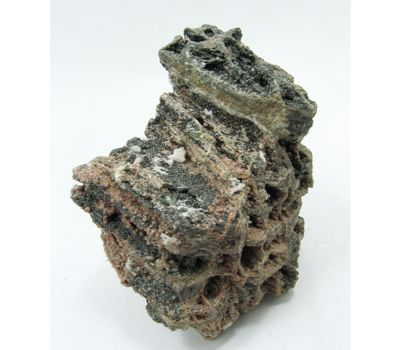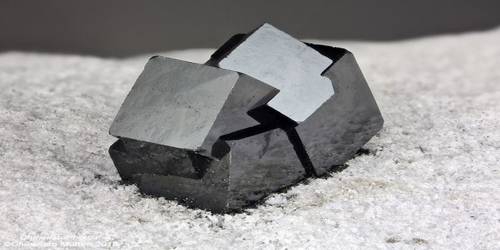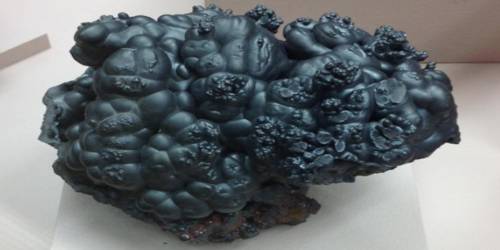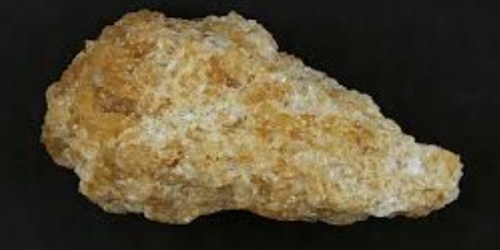Jacobsite is a manganese iron oxide mineral. It is in the spinel group and forms a solid solution series with magnetite. The chemical formula is MnFe2O4 or with oxidation states and substitutions: (Mn2+, Fe2+, Mg) (Fe3+, Mn3+)2O4. It is a black magnetic isometric mineral consisting of an oxide of manganese and iron and constituting a member of the magnetite series.
It was first described in 1869 and named for the Jakobsberg Mine, Nordmark, Filipstad, Värmland, Sweden.
General Information
- Category: Oxide minerals (Spinel structural group
- Formula: iron(II, III) manganese oxide, MnFe2O4
- Crystal system: Isometric
- Crystal class: Hexoctahedral (m3m)

Fig: Jacobsite – a manganese iron oxide mineral
Properties
Jacobsite forms opaque to translucent, black to brownish black crystals or coarse to fine granular masses with metallic to a submetallic luster. It is a manganese iron oxide mineral, a member of the magnetite, series of spinels.
- Color: Black to brownish black
- Crystal habit: Disseminated to massive, rarely as octahedral crystals
- Fracture: Conchoidal
- Mohs scale hardness: 5.5 – 6.5
- Luster: Metallic
- Streak: reddish black to brown
- Diaphaneity: Opaque
- Specific gravity: 4.76
- Optical properties: Isotropic
Occurrence: A primary mineral or an alteration product of other manganese-bearing minerals in some metamorphosed manganese deposits.
It occurs as a primary phase or an alteration of other manganese minerals during metamorphism of manganese deposits. Typically associated minerals include hausmannite, galaxite, braunite, pyrolusite, coronadite, hematite, and magnetite.
Association: Hausmannite, galaxite, braunite, pyrolusite, coronadite, hematite, magnetite.
Information Source:
















